- News
- Reviews
- Bikes
- Accessories
- Accessories - misc
- Computer mounts
- Bags
- Bar ends
- Bike bags & cases
- Bottle cages
- Bottles
- Cameras
- Car racks
- Child seats
- Computers
- Glasses
- GPS units
- Helmets
- Lights - front
- Lights - rear
- Lights - sets
- Locks
- Mirrors
- Mudguards
- Racks
- Pumps & CO2 inflators
- Puncture kits
- Reflectives
- Smart watches
- Stands and racks
- Trailers
- Clothing
- Components
- Bar tape & grips
- Bottom brackets
- Brake & gear cables
- Brake & STI levers
- Brake pads & spares
- Brakes
- Cassettes & freewheels
- Chains
- Chainsets & chainrings
- Derailleurs - front
- Derailleurs - rear
- Forks
- Gear levers & shifters
- Groupsets
- Handlebars & extensions
- Headsets
- Hubs
- Inner tubes
- Pedals
- Quick releases & skewers
- Saddles
- Seatposts
- Stems
- Wheels
- Tyres
- Health, fitness and nutrition
- Tools and workshop
- Miscellaneous
- Tubeless valves
- Buyers Guides
- Features
- Forum
- Recommends
- Podcast
£3,600.00
VERDICT:
Hugely versatile road-cum-gravel bike that is very comfortable to ride – and quick too
Impressive comfort levels
Feels lively out on the road
Great tyre clearances
Tyres aren't the liveliest feeling
Weight:
8,210g
Contact:
At road.cc every product is thoroughly tested for as long as it takes to get a proper insight into how well it works. Our reviewers are experienced cyclists that we trust to be objective. While we strive to ensure that opinions expressed are backed up by facts, reviews are by their nature an informed opinion, not a definitive verdict. We don't intentionally try to break anything (except locks) but we do try to look for weak points in any design. The overall score is not just an average of the other scores: it reflects both a product's function and value – with value determined by how a product compares with items of similar spec, quality, and price.
What the road.cc scores meanGood scores are more common than bad, because fortunately good products are more common than bad.
- Exceptional
- Excellent
- Very Good
- Good
- Quite good
- Average
- Not so good
- Poor
- Bad
- Appalling
For those of you who want a bike that is quick and fun handling on the road but also able to take knobbly tyres for a bit of off-roading action, the Merida Mission Road 7000-E is a very good choice. It's pretty light, it's comfortable and it offers plenty of versatility. I reckon it's a looker, too.
Liam rode the Mission CX 8000 cyclo-cross bike back in 2018 and one of the things he was impressed with was that on the tarmac it felt just like a normal road bike. Now, Merida has delivered that frameset in a roadie setup: the Mission Road.
> Order from your nearest dealer: find yours here
Ride
I spent the majority of January and February riding the Merida and they were certainly some wet and windy months, but the Mission Road was spot on for the job.
With a 1,016mm wheelbase, a slack 71.75-degree head angle (size medium) and wide 32mm tyres, the Merida certainly gives you a sense of confidence and security when the road surface is pretty rubbish.
The handling is neutral on the road and it feels really positive. There is loads of feedback from the frame and fork, which really lets you know what the tyres are up to, allowing you to push on into the bends carrying plenty of speed.
It's only in the most technical of corners that you'll find the Mission Road wanting, but then again, that's not really what it's about.
Stiffness is plentiful as well, thanks mostly to the tapered head tube and the chunky down tube that leads into the oversized PF86 bottom bracket area before finishing off with box section chainstays.
Some of you might be rolling your eyes at the thought of a press-fit BB, but considering all of the rain and crap I rode the bike through, I didn't have a single creak or moan from it. Nor did Liam after using the Mission CX for plenty of cyclo-cross races and the jet washing that often followed.
The Mission Road bikes are Merida's Endurance line-up and it is big miles where they stand out. The geometry is pretty aggressive, with the short 125mm head tube, but if you take into account the taller fork for added tyre clearance, it means that the stack height is just over 15mm less than the equivalent sized Scultura, Merida's race bike. Reach is practically the same, but taking overall length into account from the saddle, Merida actually fits a stem to the Mission Road about 20mm shorter than on a standard road bike.
The compact frame design gives you the ability to run plenty of seatpost, which adds to the comfort, and I found the whole riding position setup very good indeed.
I could achieve a relatively aero shape thanks to the saddle to handlebar drop without it being too extreme, and could make full use of the drops for those harder efforts or tapping away into a headwind.
Thanks to all of this, and the comfort of the carbon fibre layup, I was very comfortable riding the Mission Road for long stints. The longest ride was about five hours and it was fun rather than a chore.
Frame and fork
For the Mission Road, Merida has gone full carbon fibre and it's very well finished. The paintwork looks great in the sunlight.
In a bid to stave off the stiffness from the bottom half of the frame, the top part of the Mission Road is rather slender, with the top tube shrinking once it's left the head tube, before flowing seamlessly into the slender seatstays.
As you'd expect on a modern carbon fibre frame, all the cabling/hoses/wires run internally for a clean look, and depending on which build you go for, various 'Smart Entry' plates are used to guide them into and out of the frame.
The 7000-E uses Di2 so there is just one wire entering the down tube, and the redundant entry port on the other side is blanked off with a smooth insert that stops the bike looking as if it has bits missing.
You'll find the Di2 battery inside the seatpost.
The full carbon fork also has internal routing for running the brake hose to the flat mount calliper. Wheel retention is taken care of by a 12mm thru-axle, and the frame follows suit at the rear.
Fitting full mudguards is an option, with the carbon fibre models of the Mission Road range coming with a removable 'brake bridge' joined to the seatstays. With the guards in place, the frame and fork will still take up to 35mm tyres, while going without sees 42mm tyres possible.
There are five frame sizes to choose from, with the XS/47 having a 520mm effective top tube and the XL/59 coming with a 580mm top tube. Stem lengths are 80mm (XS/S), 90mm (M/L) and 100mm on the XL.
There's a full geometry page on Merida's website, if you follow the 'contact' link up top.
Groupset
The 7000-E model is based around a Shimano Ultegra Di2 groupset, with the only parts deviating from that being the KMC chain and Shimano 105 cassette to keep costs down.
All the Mission CX bikes come with a 1x groupset but, being road-orientated, the Mission Roads come with a double chainring and front mech.
Merida has gone for a compact 50/34-tooth option, which I reckon works well for the type of riding the bike is aimed at, paired to an 11-30 cassette. You've got some high-performance ratios there and a couple of bail-out options should you need them.
Braking is taken care of by 160mm Shimano RT-800 rotors front and rear which work a treat, even if they do squeal a bit in the wet until they have bedded in.
Performance-wise you can't really fault Ultegra. The braking is absolutely spot on with loads of progressive feel to them when applying the power, and riding in all conditions bar ice and snow I've never locked up a front tyre through applying them too aggressively. Even emergency stops are carried out without fuss.
Shifting is much the same: the latest Di2 groupsets on the market are so much more refined than the early versions – and they were pretty good anyway.
The new Ultegra changes between the sprockets quickly and cleanly, and there is more feedback at the lever so you can actually feel when the shifting is taking place, so you can back off the power on the pedals a touch when shifting to a lower gear under load.
Finishing kit
The finishing kit comes from Merida's own parts bin, all with Expert moniker. The handlebar and stem are both aluminium, while the Team SL seatpost is made from carbon fibre in a 27.2mm diameter with 15mm setback.
It's all decent quality kit and doesn't detract from the frameset.
The Expert CC saddle is very slimline, like you'd expect on a performance road bike, although its minimal padding still manages to be very comfortable, helped by a little bit of hull flex.
Wheels and tyres
Merida has specced DT-Swiss P1850 CL 23 wheels, a solid set of all-rounders. They're light enough for fast paced riding but also strong enough to take a fair bit of abuse from rough roads. I have ridden on loads of DT Swiss wheels and have always been very impressed.
These are 23mm deep, so they work well in the hills as well as on the flat, and their 18mm inner rim width, while not being the widest out there, works well with the 32mm tyres.
Speaking of which… the DT Swiss wheels are shod with Continental Grand Prix 4 Seasons: highly respected and tough enough for riding through the winter weather while offering plenty of grip in the wet and dry.
For quick riding in the dry I find them a little 'dead', and for the warmer months I'd definitely be swapping them out for something with a softer compound or more supple sidewalls for a bit more feedback from the road.
Value
One thing Liam criticised the Mission CX 8000 for was the price. He felt it was a little bit expensive at £3,600 with a SRAM Force 1x groupset and DT Swiss ER1400 wheels.
The Mission Road 7000-E costs exactly the same but with an electronic groupset, and I actually think it looks to be better value – you're getting double the chainrings for a start!
> Buyer’s Guide: 22 of the best sportive and endurance bikes
Consider the opposition: if you want a lightweight, fast, carbon frameset that'll take wide tyres then something like the 3T Exploro Pro is an option – Mat was pretty impressed with it.
It's priced at £4,000, though, with a GRX groupset and Fulcrum Racing 7 DB wheels, so the Merida certainly out-specs it.
Salsa's Warroad is a bike that can cross over from road to off-road but is aimed more at the former. The Merida is not only much more fun to ride, it comes in under the £3,750 price tag of the Salsa – and the Salsa only gets Shimano 105 for the groupset.
Conclusion
Overall, I really enjoyed riding the Mission Road 7000-E. It's a pleasurable place to be and it just gets on with the job. It's ideal when commuting or riding long distances because you just don't really notice it, but then when you want a bit of fun it's there waiting for you to just stamp on the pedals.
Verdict
Hugely versatile road-cum-gravel bike that is very comfortable to ride – and quick too
road.cc test report
Make and model: Merida Mission Road 7000-E
Size tested: Medium
About the bike
List the components used to build up the bike.
FRAME MISSION CX CF3
FRAME SIZE XS, S, M, L, XL
COLOR SILK FOG GREEN/BLACK
FORK MISSION CX CF3
BRAKE FRONT Shimano Ultegra
BRAKE REAR Shimano Ultegra
ROTOR FRONT Shimano RT800
ROTOR REAR Shimano RT800
BRAKE LEVER Shimano Ultegra
HEADSET VP-B303AC Neck
HANDLEBAR MERIDA EXPERT SL
HANDLEBAR STEM MERIDA EXPERT CC
GRIP MERIDA ROAD EXPERT
DERAILLEUR (F) Shimano Ultegra Di2
DERAILLEUR (R) Shimano Ultegra Di2
SHIFTER FRONT Shimano Ultegra disc Di2
SHIFTER REAR Shimano Ultegra disc Di2
SEAT POST MERIDA TEAM SL
SEAT CLAMP MERIDA Expert
SADDLE MERIDA EXPERT CC
CHAIN KMC X11
CHAINWHEEL Shimano Ultegra
CRANK SIZE 170 mm-XS/S, 172.5 mm-M, 175 mm-L/XL
FREEWHEEL Shimano CS-R7000
BOTTOM BRAKET Shimano Pressfit BBR72
WHEELSET DT Swiss P1850 SP 700C CL 23
TIRE FRONT Continental Grand Prix 4-Season
TIRE REAR Continental Grand Prix 4-Season
AXLE REAR MERIDA EXPERT SL
Tell us what the bike is for and who it's aimed at. What do the manufacturers say about it? How does that compare to your own feelings about the bike?
Merida says, "Based on the hugely popular and highly regarded MISSION CX frame, we have created a new addition to our tarmac focused line-up - the MISSION ROAD. Offering a modern frame design with sporty geometry, plenty of tyre clearance and seamless integration of the latest standards, the ROAD has a more road biased specification package, which makes long days in the saddle a breeze. Wide tyres offer plenty of comfort, even on the most pothole littered country lanes, while a higher front end (through added spacers) provides a more relaxed riding position.
"The new MISSION ROAD speaks to endurance, leisure, pleasure and passionate cyclists. It is the perfect machine for riders who want to ride, whatever the weather and throughout the seasons, but who do not see the asphalt edge as the limit. It is a high quality and sporty training machine, while also being a fast and reliable commuter, a versatile adventure bike and above all a comfort orientated road endurance bike."
It works really well, giving you a very versatile bike for endurance style riding.
Where does this model sit in the range? Tell us briefly about the cheaper options and the more expensive options
The 7000-E sits at the top of the range. Below it is the 4000 which uses the same frameset but is decked out with Shimano 105, and then the 400 which has an alloy frame, also with 105 kit.
Frame and fork
Overall rating for frame and fork
9/10
Tell us about the build quality and finish of the frame and fork?
Very good build quality and the paint is tough plus it looks great in the sun.
Tell us about the materials used in the frame and fork?
From Merida:
MISSION CX CF3 FRAME
Carbon frame with carbon dropouts. 'Nano Matrix' for extra impact resistance, Tapered head tube and 142x12 mm rear through axle provide stiffness and steering precision. 'Smart Entry' Internal cable routing, removable seat stay bridge and mudguard mounts. The flat mount rear caliper is mounted on the chainstay which is better for dissipating braking forces but also keeps it protected inside the rear triangle.
CARBON FORK
All MISSION Road models feature a full carbon tapered fork with a 12 mm bolt through axle. The bolt through improves stiffness for the axle, whilst the tapered carbon steerer increases vertical stiffness, providing very precise steering and enhanced confidence in corners.
Tell us about the geometry of the frame and fork?
The geometry is based on a cyclo-cross bike, so quite aggressive for racing off-road but creates a much more mild mannered approach when used on the road thanks to the slacker head angle than that found on many race bikes.
How was the bike in terms of height and reach? How did it compare to other bikes of the same stated size?
With a longer fork than many road bikes but a shorter head tube, the stack works out much the same as an endurance bike. The top tubes are sensibly proportioned too for that style of riding.
Riding the bike
Was the bike comfortable to ride? Tell us how you felt about the ride quality.
Very comfortable indeed considering how stiff the frame is.
Did the bike feel stiff in the right places? Did any part of the bike feel too stiff or too flexible?
I certainly didn't have any issues when riding hard on the climbs. Plenty of front end stiffness and around the bottom bracket.
How did the bike transfer power? Did it feel efficient?
Impressive across the board. It might feel a little more efficient with some lighter tyres though.
Was there any toe-clip overlap with the front wheel? If so was it a problem?
No, none.
How would you describe the steering? Was it lively neutral or unresponsive? On the road, very neutral.
Tell us some more about the handling. How did the bike feel overall? Did it do particular things well or badly?
The slacker head angle than most road bikes means that the Merida doesn't have the quickest handling, but it works very well, only getting a little 'vague' when you are really hammering it through the bends.
Which components had the most effect (good or bad) on the bike's comfort? would you recommend any changes?
I was impressed with how comfortable the narrow saddle was, and the amount of seatpost on display adds to the comfort.
Which components had the most effect (good or bad) on the bike's stiffness? would you recommend any changes?
The wheels offer plenty of stiffness as does the Merida finishing kit. All dealt well with hard, out-of-the-saddle efforts.
Which components had the most effect (good or bad) on the bike's efficiency? would you recommend any changes?
I'd change to some decent race tyres for the warmer months.
Rate the bike for efficiency of power transfer:
9/10
Rate the bike for acceleration:
8/10
Rate the bike for sprinting:
8/10
Rate the bike for high speed stability:
8/10
Rate the bike for cruising speed stability:
8/10
Rate the bike for low speed stability:
9/10
Rate the bike for flat cornering:
8/10
Rate the bike for cornering on descents:
7/10
Rate the bike for climbing:
8/10
The drivetrain
Rate the drivetrain for performance:
9/10
Rate the drivetrain for durability:
8/10
Rate the drivetrain for weight:
8/10
Rate the drivetrain for value:
7/10
Tell us some more about the drivetrain. Anything you particularly did or didn't like? Any components which didn't work well together?
The Shimanbo Ultegra Di2 groupset is an absolute joy to use and the Merida comes with a good spread of gears.
Wheels and tyres
Rate the wheels for performance:
7/10
Rate the wheels for durability:
8/10
Rate the wheels for weight:
7/10
Rate the wheels for comfort:
7/10
Rate the wheels for value:
7/10
Tell us some more about the wheels.Did they work well in the conditions you encountered? Would you change the wheels? If so what for?
A solid set of wheels.
Rate the tyres for performance:
7/10
Rate the tyres for durability:
9/10
Rate the tyres for weight:
7/10
Rate the tyres for comfort:
7/10
Rate the tyres for value:
6/10
Tell us some more about the tyres. Did they work well in the conditions you encountered? Would you change the tyres? If so what for?
A dependable set of tyres but the Merida deserves something better.
Controls
Rate the controls for performance:
7/10
Rate the controls for durability:
8/10
Rate the controls for weight:
7/10
Rate the controls for comfort:
7/10
Rate the controls for value:
7/10
Tell us some more about the controls. Any particularly good or bad components? How would the controls work for larger or smaller riders?
Decent enough quality stuff from Merida – I wouldn't be in a massive hurry to change anything.
Your summary
Did you enjoy riding the bike? Yes
Would you consider buying the bike? Yes
Would you recommend the bike to a friend? Yes
How does the price compare to that of similar bikes in the market, including ones recently tested on road.cc?
Against some of the top end carbon road/gravel bikes we've tested, the Merida looks decent value. It's much cheaper than the Salsa Warroad, for example, and is a nicer ride too; it's also lighter and better specced than the four-grand 3T mentioned in the review.
Rate the bike overall for performance:
8/10
Rate the bike overall for value:
7/10
Use this box to explain your overall score
A fast road bike for those who don't want a racer, and it comes with plenty of comfort. You are getting a lot of versatility too, with the ability to run big tyres with mudguards or even swapping over to some gravel tyres for some off-road fun.
About the tester
Age: 41
I usually ride: This month's test bike My best bike is: B'Twin Ultra CF draped in the latest bling test components
I've been riding for: Over 20 years I ride: Every day I would class myself as: Expert
I regularly do the following types of riding: time trialling, commuting, club rides, sportives, fixed/singlespeed,
Since writing his first bike review for road.cc back in early 2009 senior product reviewer Stu has tested more than a thousand pieces of kit, and hundreds of bikes.
With an HND in mechanical engineering and previous roles as a CNC programmer/machinist, draughtsman and development engineer (working in new product design) Stu understands what it takes to bring a product to market. A mix of that knowledge combined with his love of road and gravel cycling puts him in the ideal position to put the latest kit through its paces.
He first made the switch to road cycling in 1999, primarily for fitness, but it didn’t take long for his competitive side to take over which led to around ten years as a time triallist and some pretty decent results. These days though riding is more about escapism, keeping the weight off and just enjoying the fact that he gets to ride the latest technology as part of his day job.






































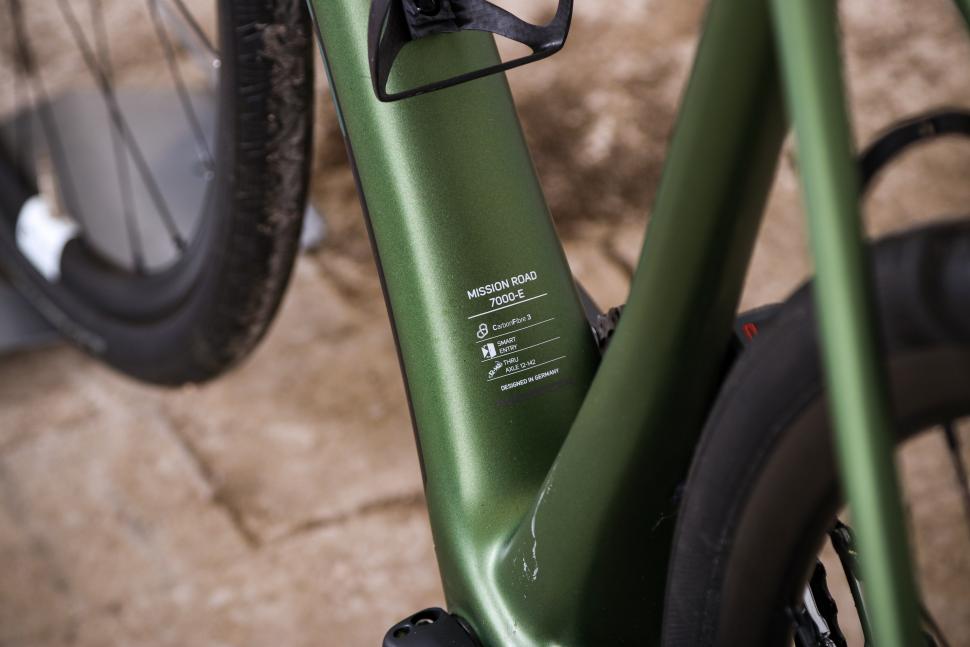





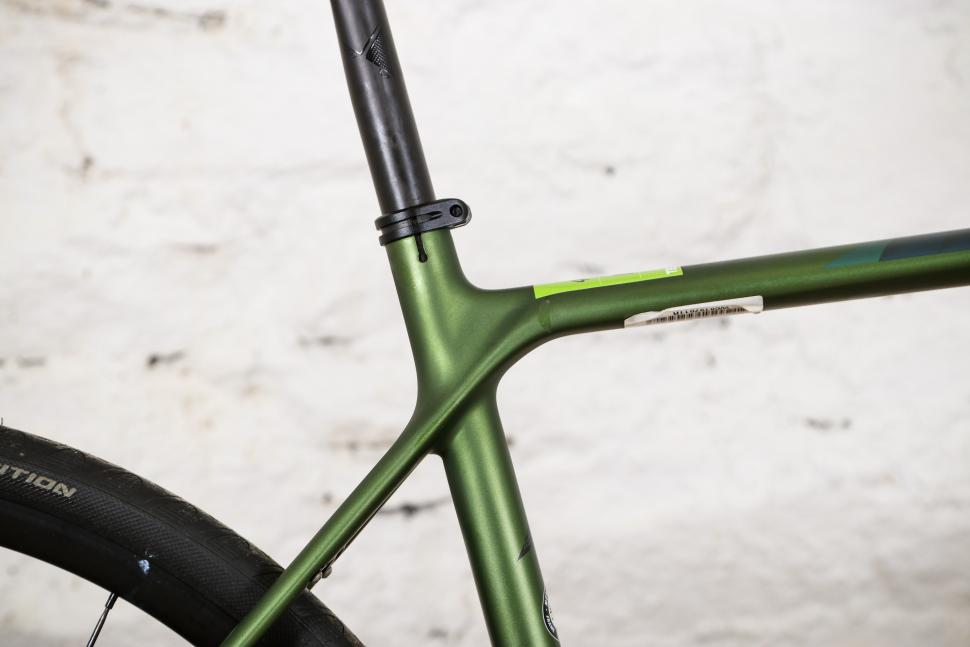
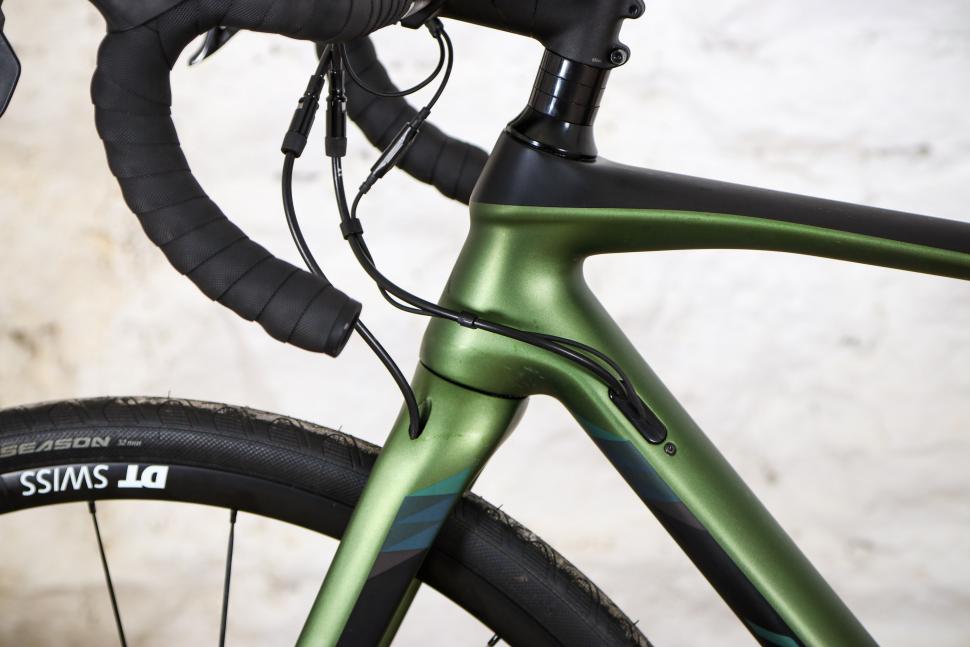




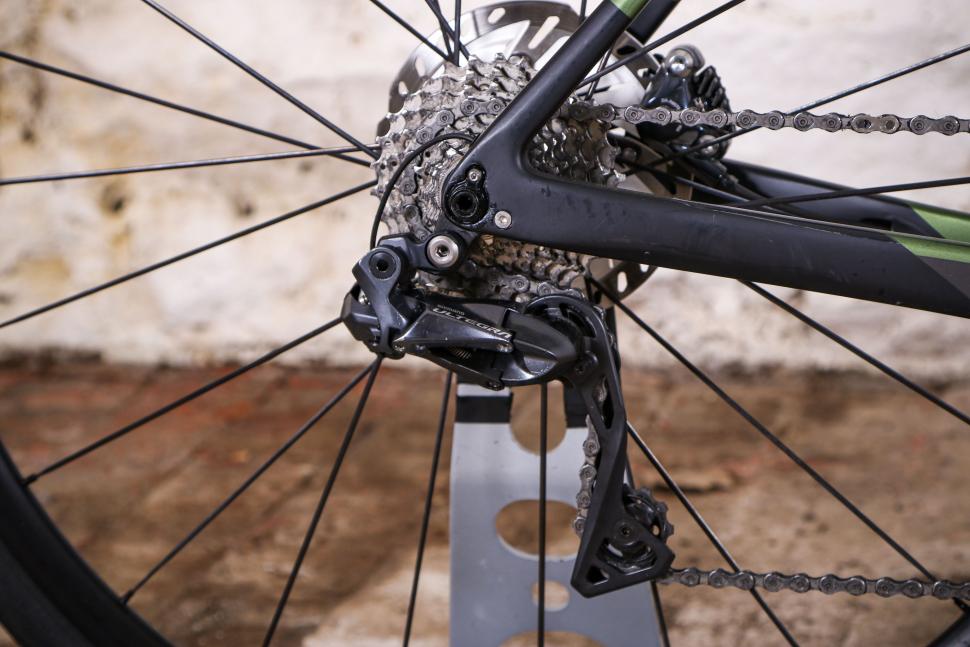
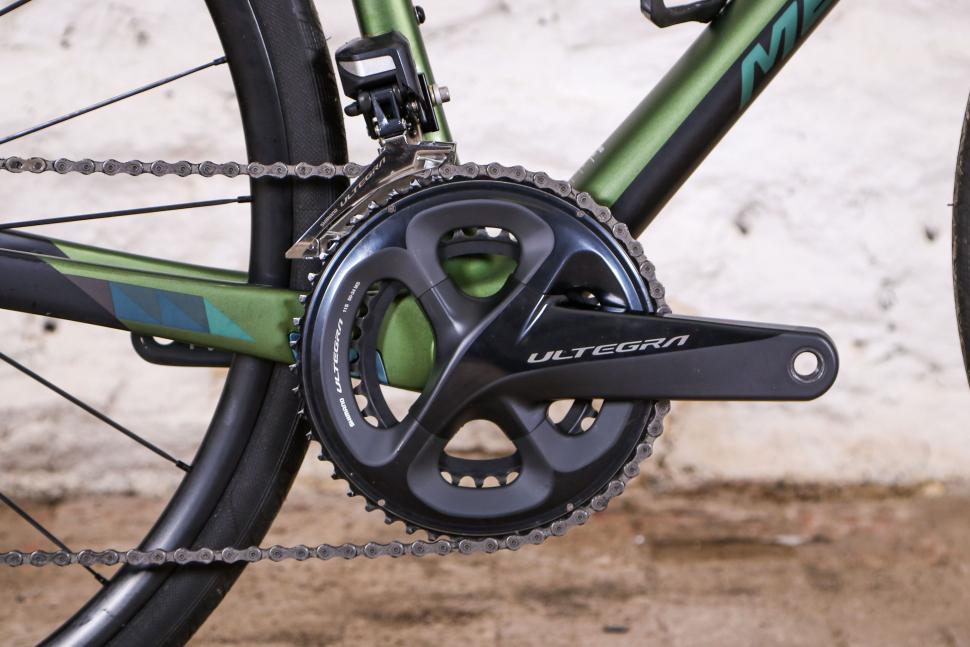

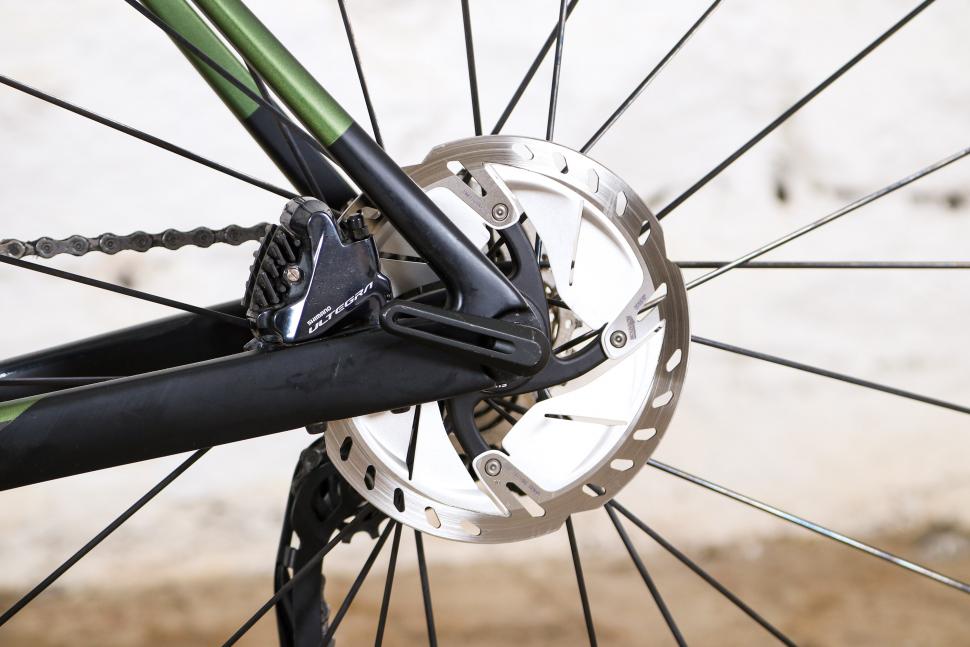


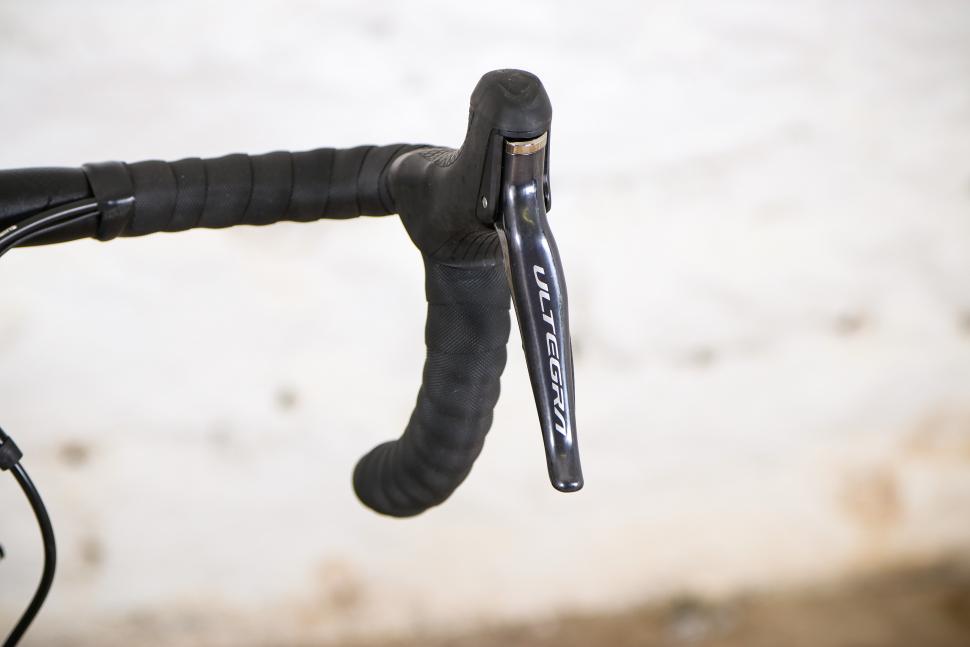


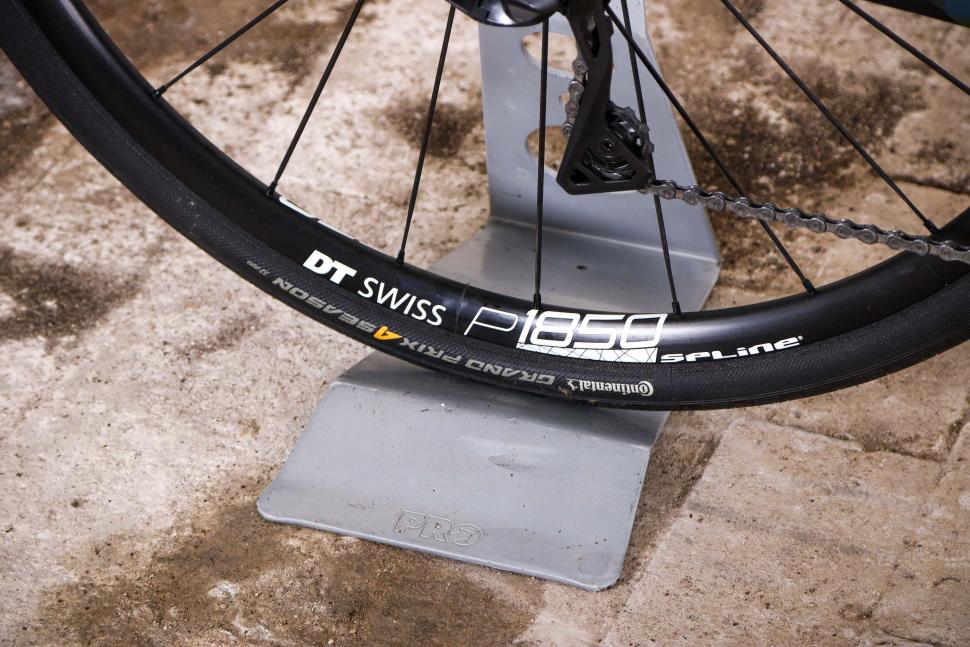

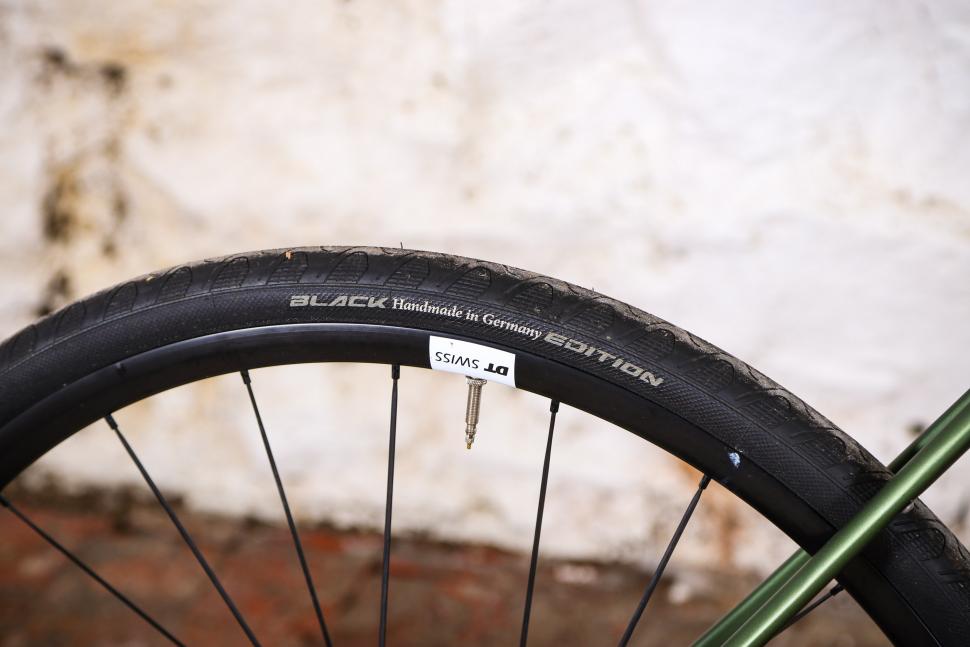
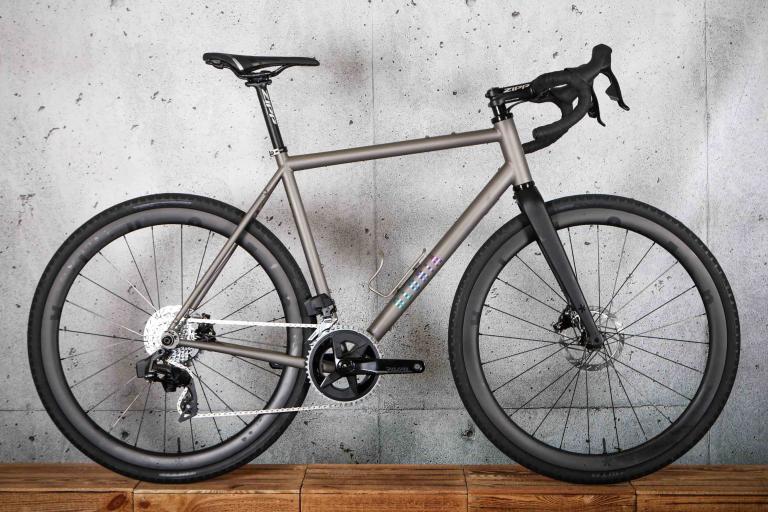

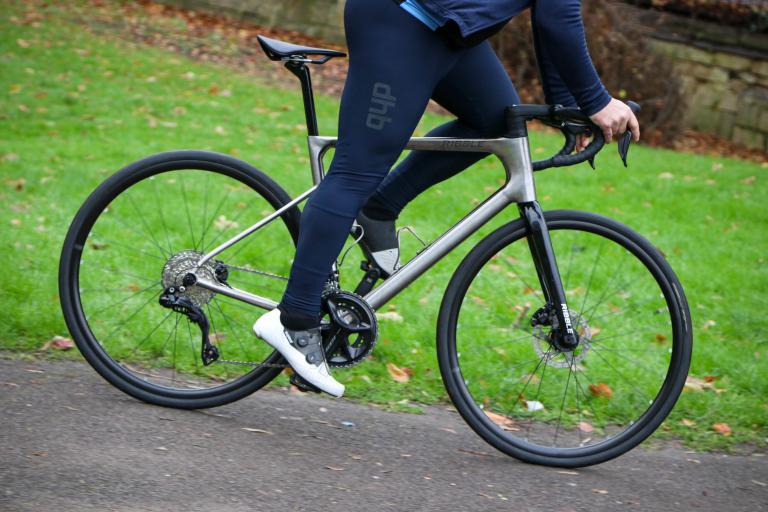
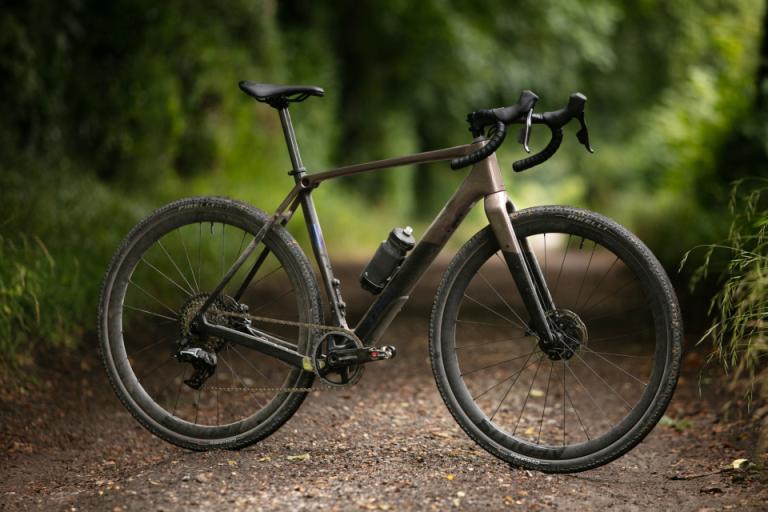
Apparently the government are thinking about the problem of delivery riders....
❤️
That's a plausible theory, but I suspect that the politics of oil consumption is a much bigger influence on the sentences given to protestors.
Haven't seen the Revo but have seen Tubolito (similar price point) and I can't tell the difference between it and RideNow. Effectively both just...
So, what's next, taxing disabled people for any access ramps etc? How about taxing the drivers that end up parking on cycle lanes?
Or drive you to a flat viewing in an 'up and coming area' in his Foxtons Mini.
Damn this labour government, they're going to tax VAT now, we should have listened to Rishi!
Just to lighten the discussion a tad, this story brings to mind the case of Jed Singh Nagra, who several years ago named his convenience store on...
Ah, the Pedants' Revolt. Led, of course, by Which Tyler.
No, the tunnel was not necessary and the congestion levels were self limiting. It's been repeated many times but is still beautifully apt:...